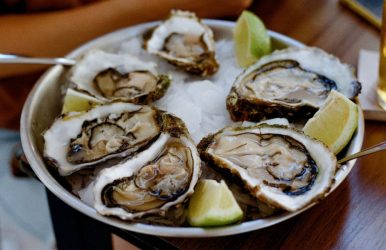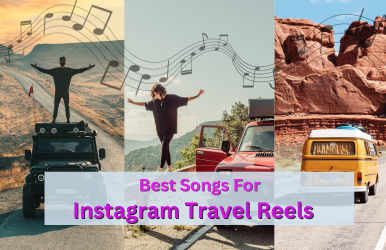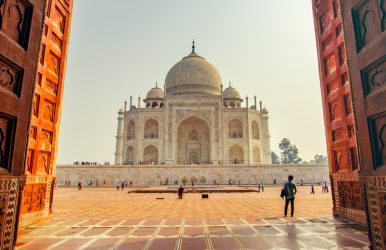Why More Tourists Are Scheduling Cosmetic Surgery Tourism Abroad As Part Of Their Itinerary
BY Sibashree Sep 3, 2025
Travel has always been about chasing something new—different foods, different languages, even different versions of ourselves. But these days, there’s a twist I never would’ve guessed ten years ago: people are flying abroad not just for beaches or ruins, but for cosmetic treatments. It used to be this quiet, almost secret thing. Now? It feels like a full-blown movement, changing how folks see both vacations and healthcare. Why Is Cosmetic Surgery Tourism A Good Idea Moreover, there are multiple reasons to consider cosmetic tourism a good idea. The Allure Of Transformation While Enjoying Cosmetic Surgery Tourism It’s wild when you think about it. People aren’t only booking flights for sightseeing anymore—they’re penciling in surgery appointments, too. Imagine wandering through old cobblestone streets, gelato in hand, while knowing your recovery is happening quietly in the background. Two journeys are happening at once. And it makes sense. There’s this weirdly beautiful overlap between exploring new places and reshaping yourself. Like you’re writing your own little travel memoir, where the scenery isn’t just a backdrop—it’s part of your healing. Affordable Luxury In World-Class Settings With Cosmetic Surgery Tourism Of course, the money side of it is a big deal. In cities like Bangkok, Istanbul, or Prague, you can get a nose job or facelift for a fraction of the price in London or New York. And no, we’re not talking shady setups. We’re talking polished clinics, international certifications, and surgeons with Ivy League degrees hanging on their walls. It feels a lot like stumbling into a tiny restaurant down an alley and realizing the food tastes Michelin-star good but costs less than a takeout back home. That’s the thrill of it—luxury you can actually afford. Expertise Across Borders With Cosmetic Surgery Tourism And here’s the kicker: the doctors aren’t just good—they’re really good. Many of them studied abroad, learned the ropes in world-famous hospitals, and then brought that knowledge home. So you end up with a mix of global skill and local hospitality. Sometimes, they’re even ahead of the curve. Offering techniques that aren’t common where you live yet. Patients leave feeling like they’ve had a peek into the future of medicine. It’s not just about change—it’s about being part of something new. Discretion Wrapped In Adventure There’s also the privacy factor. Let’s face it, not everyone wants their coworkers or neighbors whispering about why their face looks different. Traveling abroad gives people the space to heal quietly. You can hide out, relax, and be home by the time you’re home? The recovery phase has already passed, and what people see is just the “after.” It’s sort of the modern version of the old grand tour. Except instead of coming back with art or stories, you return with a little glow-up no one saw coming. Healing In Idyllic Surroundings And healing doesn’t have to be sterile. It can mean resting by the Aegean Sea, or waking up in a boutique hotel where the windows open to mountain air. Many packages include spa stays, yoga sessions, or cultural trips alongside surgery. It’s very… Romantic poet energy. That mix of landscapes and personal renewal. Except now there’s anesthesia involved. Strange, but it works. Escaping The Waiting Game Here is another reason for Cosmetic Surgery Tourism? Timing. Back home, you might wait months—sometimes longer—for elective surgery. Abroad, appointments are often faster, and that slots perfectly into a trip. You pick your destination, set the dates, and you’re in charge instead of waiting on a hospital calendar. Tailored Packages For Seamless Journeys Nobody’s winging this on their own either. Travel agencies, tourism boards, and even clinics themselves put together all-inclusive packages. Pickups at the airport, a driver, comfy hotels, follow-up care, sometimes even guided tours once you’re okay to walk around. It’s not just surgery anymore. It’s an experience, planned almost like a vacation package—with a side of self-improvement. Cultural Immersion Alongside Renewal And honestly, half the fun is mixing in the culture. People don’t just sit in bed the whole time—they go out, taste tapas in Barcelona, wander temples in Chiang Mai, or simply sit at a café and people-watch while recovering. That blend of physical change and cultural immersion makes the trip more meaningful. Almost like a pilgrimage—except instead of chasing spiritual enlightenment, you’re chasing both healing and adventure. Moreover, Cosmetic Surgery Tourism allows for cultural mingling along with cosmetic transformation. The Role Of Hospitality In Medical Travel This isn’t the cold, clinical hospital vibe most of us picture. Clinics abroad often feel like boutique hotels. Multilingual staff, plush waiting areas, coordinators who hold your hand through every step. It has this old-school travel feel, when journeys themselves were meant to be savored. Except here, you’re not just a patient—you’re a guest, and everything feels tailored. Wellness Beyond The Procedure And surgery’s just the headline. A lot of places weave in extras like yoga in Bali, mineral baths in Hungary, and Ayurveda in India. Those little add-ons take recovery beyond physical, giving you that mental lift too. It ties back to that saying—healthy body, healthy mind. Surgery plus wellness feels more complete, more lasting. Building Global Friendships And Communities Here’s something people don’t expect: the friendships. In recovery hotels or shared clinics, strangers from all over the world end up swapping stories. Suddenly, you’ve got this mini community forming around shared experiences. Even in the U.S., you’ll see the same vibe. Someone might go to New York for a smile makeover, then hit a Broadway show while they’re there. Mixing medicine with culture just makes the whole thing stick in your memory. Those seeking a comprehensive transformation of their smile, for instance, may explore a smile makeover in New York, where top-tier cosmetic dentists offer tailored treatments in the heart of Manhattan. Like those old travel tales where strangers became lifelong friends on the road, patients today are finding that same connection. Sustainability And The Future Of Cosmetic Surgery Tourism With the industry booming, sustainability’s becoming part of the conversation. Eco-resorts, green-certified clinics, and even responsible tourism options are sneaking into these packages. People want transformation, but they also want to feel good about the impact of their choices. It fits with the times. Just like picking organic food or a hybrid car, choosing an eco-friendly clinic feels right. It adds another layer of meaning to the trip. A New Form Of Storytelling And at the end of it all, everyone comes home with a story. Maybe it’s sipping tea in Istanbul during recovery. Maybe it’s strolling Buenos Aires streets with bandages tucked under sunglasses. These aren’t just medical stories—they become part of life’s narrative. Travel writing, but different. Instead of “the trip that changed my perspective,” it becomes “the trip that changed the way I see myself in the mirror.” A New Chapter In Travel With online consultations and digital planning, arranging this stuff has never been easier. You don’t fly in blind. You know your surgeon, your package, and even your aftercare plan before you leave. This means less stress and more focus on the actual journey. Begin Your Own Journey Cosmetic tourism isn’t some fad. It’s an open invitation. A way to blend a little adventure with self-renewal. So if you’ve been toying with the idea of change, maybe your next trip could give you more than just souvenirs. Your transformation? It might be just one flight away.






















